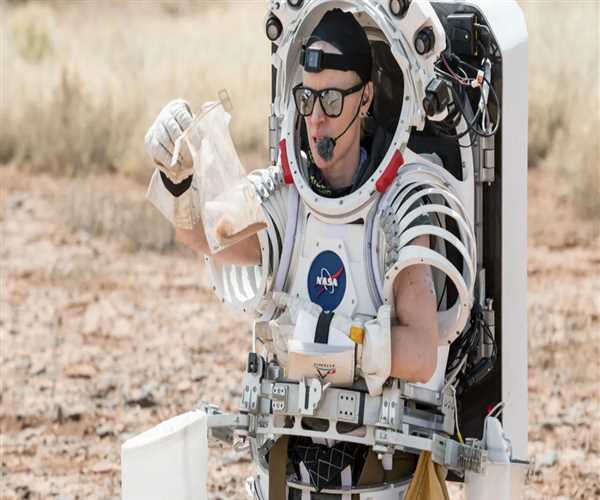
17-May-2024 , Updated on 5/19/2024 2:25:02 AM
NASA Astronauts Transform Arizona Desert into Training Ground for Artemis III Moonwalk
Astronauts of NASA have prepped for the upcoming Artemis III mission, a task which for the first time will bring humankind back to the Moon since 1972. But before they embark on this groundbreaking journey, they're honing their skills in an unexpected location: the Arizona desert because its drier climate is more aligned with human figurative.
Background: Getting back to the moon
This mission is named after a figure from the mythology of antiquity and are all about the possibility of colonizing the Moon and settling there. Artemis desires to have people of different ethnicities and genders, men and women, in its space exploration. The Artemis program will utilize new technology, learn from past missions, and is about to have an exciting time on the Moon letting us know that space is for everyone and encouraging us to envision the biggest dreams.
Training in Earth's Deserts: Imitating the Moon Scenery
Volcanic Field San Francisco in the area of Flagstaff, Arizona allows for the creation of a fantastic lunar conditions' atmosphere. Having it hard to master the land, numerous geological features, and weak communication settings, the desert will be similar to what astronauts will deal with near the lunar South Pole during the Artemis missions.
Practice Makes Perfect: Modern Moonwalk Simulations
Astronauts Kate Rubins and Andre Doulos are pacing up the training initiative, getting into an imitation version of the spacesuits and conducting a lot of handouts to mimic the moonwalk layout. Ranging from tech demos to Hardware checkouts to Artemis-related operations, this mission is thoroughly practiced in the simulated lunar environment.
Field Tests: Worthwhile Stages of Mission Planning
These field tests act as a common denominator during the Artemis missions, ever playing the success of those missions. With thorough planning, astronauts will be able to solve any unexpected issues that may occur on their return to the moon.
According to Barbara Janoiko, director of field tests at Johnson Space Center, engineering and science departments have created a tighter collaboration and work effortlessly in such a campaign.
Moonwalks and hi-tech obstacle courses.
To make the training regimen comparable to that of the Artemis III mission, the lunar astronauts must complete four simulated moonwalks and six complex technological runs. In these missions, lunar exploration teams put into operation cutting-edge technologies, like virtual reality panels, and lighting indicators, intended to increase the comfort and intercommunication within the group out of Earth's orbit.
Conducting the South Pole Lunar Missions Investigation
The primary idea of the test is to explore the operations of the mission at the lunar south pole, the strategic place of the later Artemis missions. The assessment covers data collection, communications, mission control teams, and rapid decision-making processes. These practices are all important for ensuring effective missions in the lunar's difficult environment.
Learning from Simulations: Increasing Mission Readiness
A debriefing session is scheduled after all the simulated moonwalks are conducted followed by assessing and noting down the lessons learned and the process of analysis. This observation allows us to redesign the operational policies, choose a better approach to technology usage, and guarantee a safe and successful journey of robotic lunar missions in the future.
Expanding on Past Success: Training Iteratively
This test in the field will further simulate the scenarios that were tested before by the joint Extravehicular Activity Test Team which was formed by NASA and other organizations. Providing the exact data to date shows NASA's firm determination to perfect iterative training and continuous improvement as they exploit uncharted areas.
Arizona Desert: A Historic Practice Terrain
With all the similarities to the lunar terrain, the AZ desert became a desert serving as a training ground for lunar exploration missions since the Apollo era. The same features are present on the Moon such as craters, faults, and lava flows giving the astronauts a realistic environment at hand, and they have embraced this to practice and get ready to face the challenges of lunar exploration.
Artemis III Mission: Road to the Moon opening up soon for exploration.
The Artemis III project has a major importance because it is planned to be the first woman, the first African American, and the first astronaut from another country, who land on the Moon. The mission is not only a momentous historical event but, also, a mark on the path for further exploration. Furthermore, it lays the groundwork for eventual crewed Mars missions.
Conclusion: Overcoming Obstacles by Creating the Benefits
With the Arizona ground becoming a training site for the Artemis III mission and the astronauts showing traits of discovering and innovation for humanity, this exemplifies the spirit that drives humanity to explore and know more in space. From each moonwalk simulation or technology test they conduct they are getting closer to the goal of a viable human settlement on the Moon and beyond.

Student
An MBA in finance imparts and improves management aptitude, inventive ability, critical thinking ability, and so forth. It offers a real-time experience that fabricates a staunch career foundation for students and working professionals. It helps them to thoroughly understand the financial sector.
Join Our Newsletter
Subscribe to our newsletter to receive emails about new views posts, releases and updates.
Copyright 2010 - 2025 MindStick Software Pvt. Ltd. All Rights Reserved Privacy Policy | Terms & Conditions | Cookie Policy